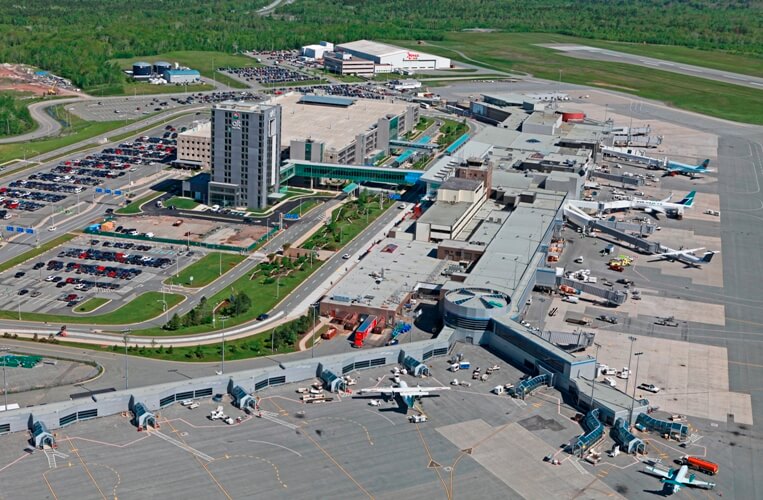Estimated reading time 4 minutes, 10 seconds.
Joyce Carter, Canadian Airports Council chair and president and CEO of Halifax Stanfield International Airport, and CAC vice-chair and Fort McMurray International Airport president and CEO RJ Steenstra, appeared before the House of Commons Standing Committee on Finance on May 1. They were there to address the current state of Canada’s airports and urge further government action on relief measures that include permanent rent relief, loan or bond guarantees and funding for small airports.

In front of a video background showing her airport’s empty departures hall, Carter clearly articulated the dramatic impact of the nation-wide travel restrictions, telling the committee, “We expect to see just 200 travellers today, compared to a daily average of 11,000”.
Since the onset of COVID-19, there has been precipitous decline in Canadian air traffic and revenues.
Overall passenger traffic declined by 90 per cent in April, and it is expected to continue at this low level
until travel restrictions are lifted, with revenue losses estimated at more than $2 billion.
Carter thanked the government for their early assistance in the crisis by providing ground lease rent
relief, which is helping preserve some cash flow in 2020, particularly for Canada’s eight busiest airports
that pay 97 per cent of the rent.
Her address to the committee emphasized that rent relief in itself is not a total solution and more
support is required for the short and long-term viability of Canada’s airports. Throughout this crisis,
airports have remained open to repatriate Canadians, safely move goods and essential workers, and
facilitate medevac and other important services.
“Airports have moved quickly to reduce operating expenses – including closing sections of our facilities
and cutting wages and staff – but many of our costs are fixed,” she explained. “Costs related to safety,
security, and runway maintenance cannot be cut in proportion to reduced traffic.”
While maintaining day-to-day operations, airports are also challenged to meet their capital debt
obligations and comply with new and costly regulatory requirements related to runway safety and
accessible air travel.
“We do not oppose these requirements but wonder how we’ll pay for them based on our current
financial situation,” she said.
Over the past several weeks, the CAC and member airports have been in discussions with government
officials on a series of measures that will help airports of all sizes sustain operations in the coming
months, which were outlined by Carter to the committee.
The first would be to permanently eliminate airport ground lease rent, preserve cash, focus on
operations during the recovery, and to pay off incremental debt acquired during the pandemic.
The second recommends loan or bond guarantees and preferred payment designation for airport
lenders to relieve the cash pressures caused by current debt obligations and allow airports to continue
to borrow at favourable rates.
The final recommendation addresses the needs of rural and remote communities by providing a funding
stream for airports with a smaller number of passengers, to cover essential operating expenses so they
can continue to connect their communities to much needed goods, workers, medical supplies, and
emergency services.
“Pre-COVID, Canada’s airports supported nearly 200,000 jobs, resulting in $13 billion in wages and $7
billion in taxes to all levels of government,” said Carter. “The health of the entire air transport
system is not only essential to serving communities and Canadians through this crisis, but also key to our
economic recovery once we begin to reopen the economy.”








